10 ways to create better percussion parts
Hand drums, shakers, scrapers and more - find out how to program them like a pro
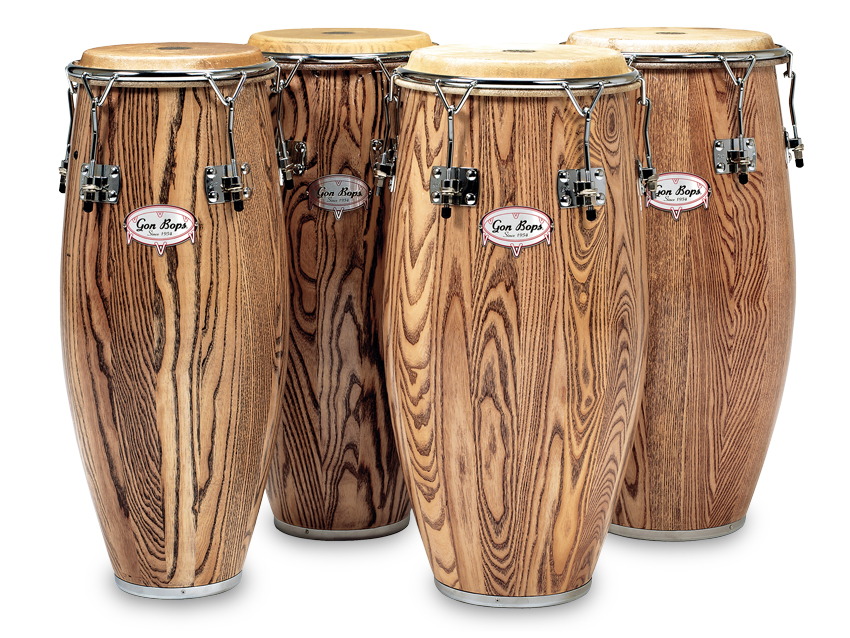
Perc'ing up
With so many options on the market these days when it comes to multisampled percussion, there's really no excuse for not getting a bit of struck, shaken and scraped instrumentation into your DAW projects. Whether used in partnership with a drum kit track or in place of one, congas, bells, tambourines, shakers, triangles and the rest of the family come together to form a uniquely expansive and dynamic set of sounds that always works well, is very amenable to glamming up with effects, and is easier to program than you might think.
With these ten tips, we aim to give you plenty of rhythmic food for thought and inspire your own percussive endeavours. Most of them are written in reference to programming MIDI percussion lines for triggering multisample libraries, but many of the ideas presented here can also be applied to prefab loops. Needless to say, we're assuming you've got a decent sample library installed, offering enough instrument types to be able to build a full and fully flexible percussion ensemble; and to be clear, what we mean here by 'percussion' is any member of the percussion family that isn't the drum kit. We're also not dealing with tuned percussion instruments such as xylophones and marimbas.
To see the ten videos that accompany these tips, get hold of Computer Music issue 211, which is on sale now.
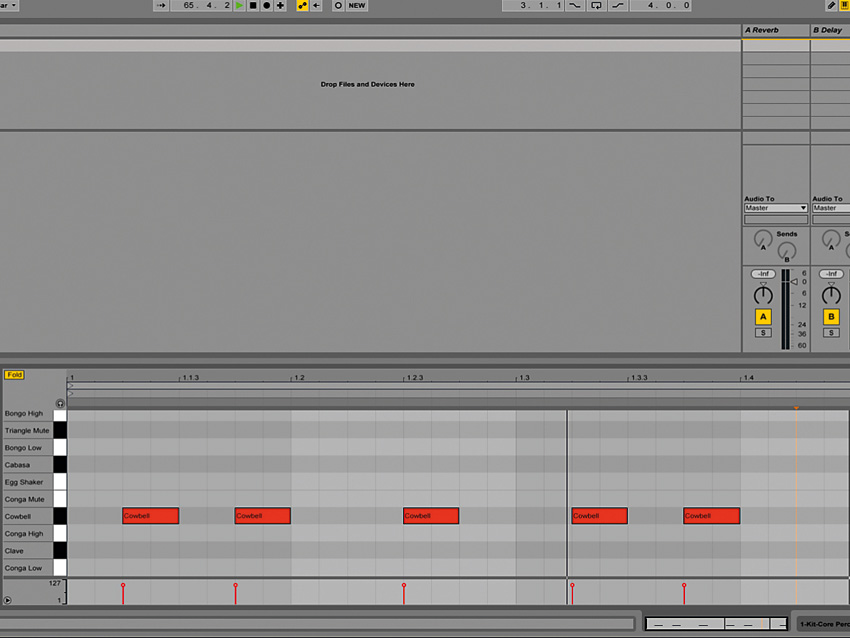
The importance of syncopation
Although we’ll look at using percussion to emphasise the backbeat later, by and large, the key to successful percussion programming is syncopation, defined by the dictionary as displacement of “the beats or accents in music or a rhythm so that strong beats become weak and vice versa”.
Syncopation puts the funk into a rhythm by simply working around the main beats in the bar - you no doubt use it all the time in your other musical parts, but it’s particularly important with percussion, which (in the context of a band line-up) is primarily intended to ‘fill the gaps’ in the main rhythm laid down by the drum kit.

Synth percussion
If you’re an electronic producer reluctant to allow acoustic percussion sounds into your tracks, you might want to try synthesising your own.
Short attacks, brief decays, quickly modulated filters and a bit of noise should all be on the agenda, and FM synthesis can be particularly handy. There are also dedicated percussion synths that are well worth checking out, such as Ableton Live’s Collision, Maschine’s Percussion and Sonic Charge’s Microtonic.

DIY percussion
If individuality is high on your list of musical priorities, why not record your own percussion using household objects? If it can be struck or shaken, it’s fair game!
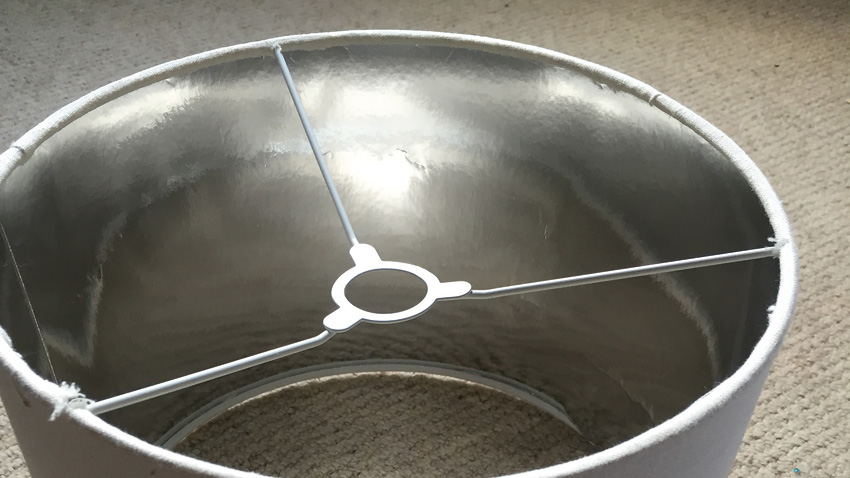
Step 1: We start by hooking a microphone up to our audio interface and going on a hunt for suitable ‘domestic’ percussion instruments. Our mission yields a miniature suitcase made of heavy cardboard, two glasses, a lampshade, a large glass jar of rice, a cheese grater and - for hitting and scraping some of the aforementioned -a wooden spoon.
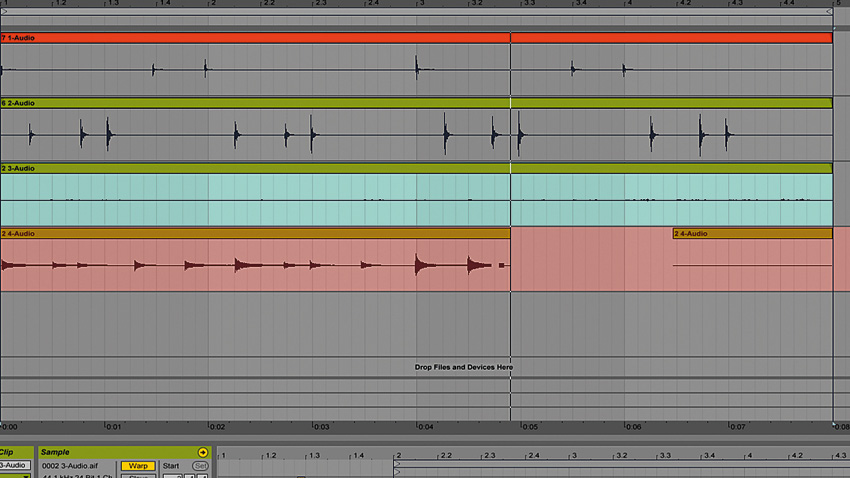
Step 2: We set up a four-bar loop in our DAW and create separate tracks for the individual instruments. We then record a pattern on each (striking the suitcase and lampshade with our hands, shaking the rice jar, and scraping and hitting everything else with the spoon), creating a layered ‘junk percussion’ track.

Step 3: A bit of warping in Live tightens up the timing of certain parts, but they’re not delivering such a powerful sound. We fire up reverb, delay, distortion, compression and other plugins to transform our raw clanks, thuds and scrapes into a hyper-real groove.
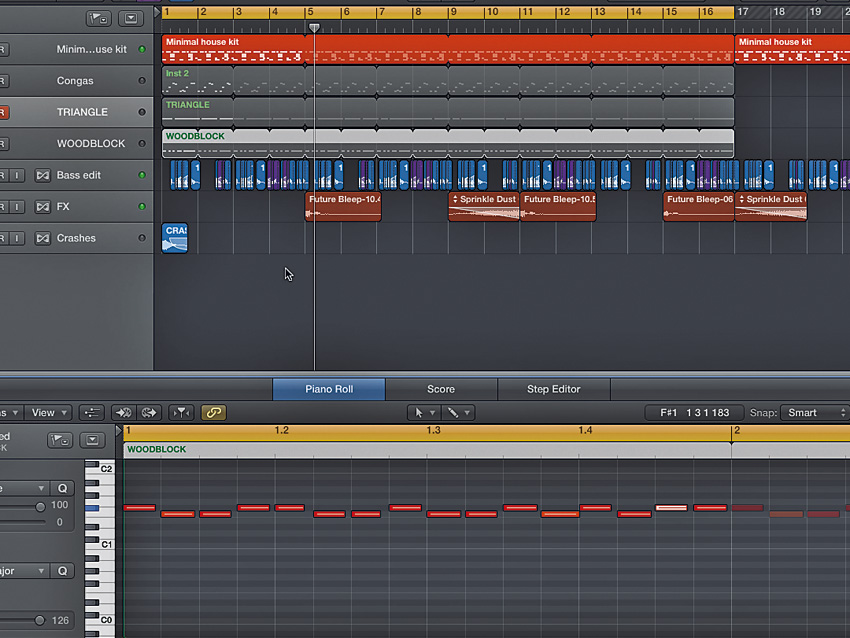
Thinning out busy parts
Although the concept of less (often) being more should be borne in mind at every stage of the composition, arrangement and production processes, it’s especially true with percussion, which generally serves as an ‘ancillary’ element in the mix and should thus be kept tasteful and uncluttered -unless it’s meant to be the focus of the track, obviously.
Basing your percussion lines on traditional clave (see tip 6) can keep you on track in this regard, but if a certain part does warrant more in the way of density - fast triangle work, for example - back the level off and/or apply EQ to sink it into the mix so that it doesn’t become intrusive or annoying. Hand drum parts (congas, bongos, djembe, etc) can be allowed to get quite a lot busier than those of the simpler percussion instruments, due to their less in-your-face sound and broader dynamic and tonal range; but like the drum kit, they should play repeating patterns, rather than constantly changing.
The full range of articulations offered by your sample library should be used to vary the stroke types, too, in the interest of realism - slap, heel, tip and so forth.
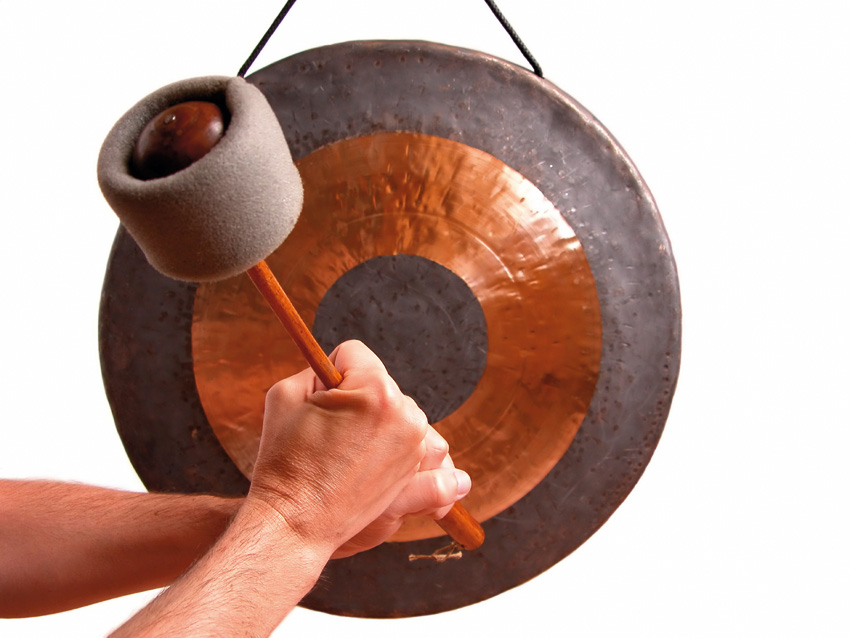
Spot percussion FX
Certain clangorous percussion instruments are ideal as one-off FX, marking transitions, punctuating drops and rises, or just generally spicing up arrangements.
Sampled mark trees, vibra-slaps, rainsticks and gongs are all readily available in sampled form, ready to drop into your tracks - just don’t use them too often, or you’ll lose the important element of surprise!
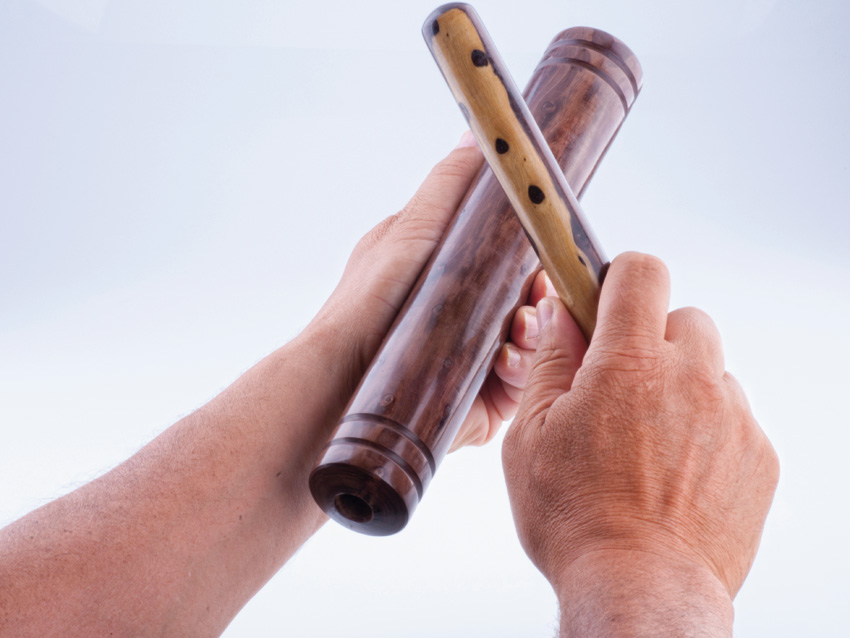
Learn the 'rules' of Latin percussion
Thanks to the well documented set of essential core rhythms known as clave (pronounced 'klah-vay'), working some genuine Afro-Cuban authenticity into your tracks couldn’t be easier.
There are two main families of clave: son clave and rumba clave, each incorporating several variations that form the backbones of the established Latin styles (rumba, son, salsa, etc), and each with its own character - Google them to find out more.
You don’t need to have any instrumental skills to take advantage of clave - just tapping out the rhythm on a single sound (claves, we’d suggest!) is all that’s required to imbue a track with that evocative Latin feel.

Layered percussion
Percussion is often at its best when it’s layered, creating a cohesive rhythmic ‘engine’ that supports the drums and bass without getting in the way of either. Here’s how it’s done…
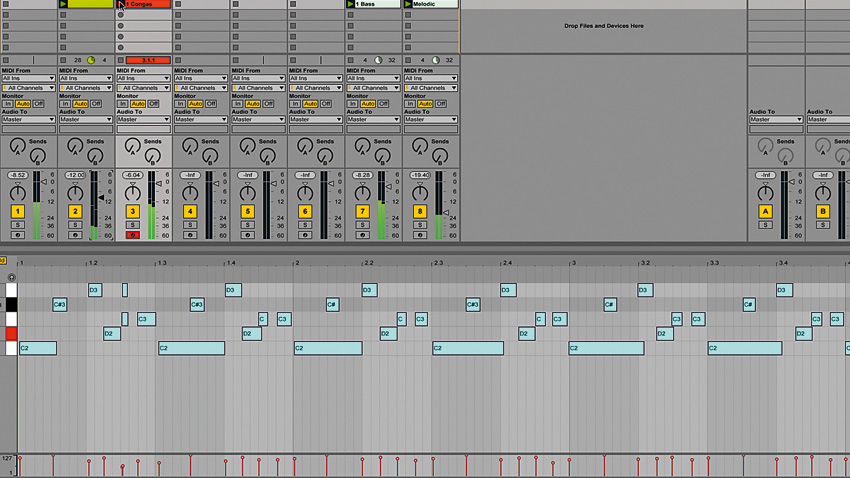
Step 1: To add some percussion to a drums, bass and synth loop, we start with some claves playing a rumba clave and some congas playing a syncopated pattern with various articulations. Already, our percussion sounds like more than the sum of its parts.
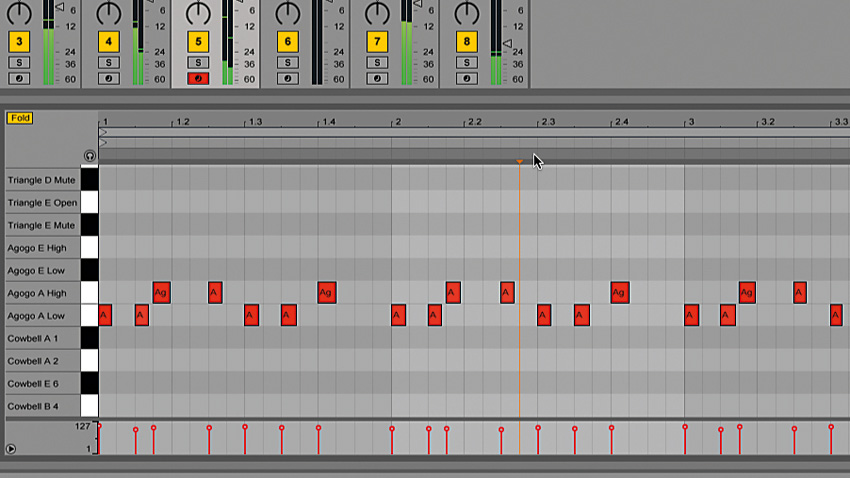
Step 2: Next, a pacey triangle part ups the high-end energy, followed by a pair of go-go bells for some pseudo-melodic funk. Finally, a shaker acts as a sort of off-beat ‘glue’, binding the whole ensemble together. We’ve been careful not to let any individual instrument get too busy here.
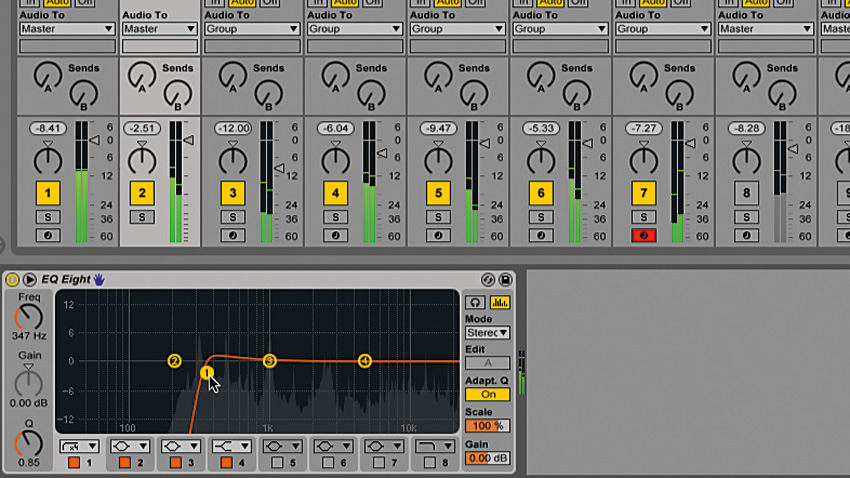
Step 3: We could just leave our percussion jam at that, but given its density, unless we want it to be a focal element of the track, a high-pass filter is just the thing to lift it above the other sounds and move it into more of a supportive rhythmic role. We also adjust the levels of our instruments for a balanced mix.

Envelope-filtered congas
Just like rhythm guitar, congas seem to work particularly well with envelope-following filters.
Grab a conga loop or programmed part, throw your envelope-equipped auto-filter plugin of choice into its mixer channel, select low- or band-pass mode, crank up the envelope depth, then adjust the cutoff, resonance, attack and release controls to find the sweet spot where the filter shapes those raw, earthy tones in a manner befitting the hosting track.
If the filter reduces the impact of the congas too heavily, try dialling some of the dry signal back in.

The power of timpani
Bring some orchestral power and bombast to your choons with timpani (aka kettle drums).
A large (up to 34" diameter) copper bowl with a tuneable skin stretched over the top, the timpani is played with a soft(ish) mallet, producing a rounded, bouncy, powerful sound that can be highly effective in all kinds of music. Try leading into a chorus or drop with a timpani roll, or pushing a bassline along with alternating notes on two or more timps tuned to the key of the track.
The same thinking can be applied to the similarly enormous Japanese taiko, too.
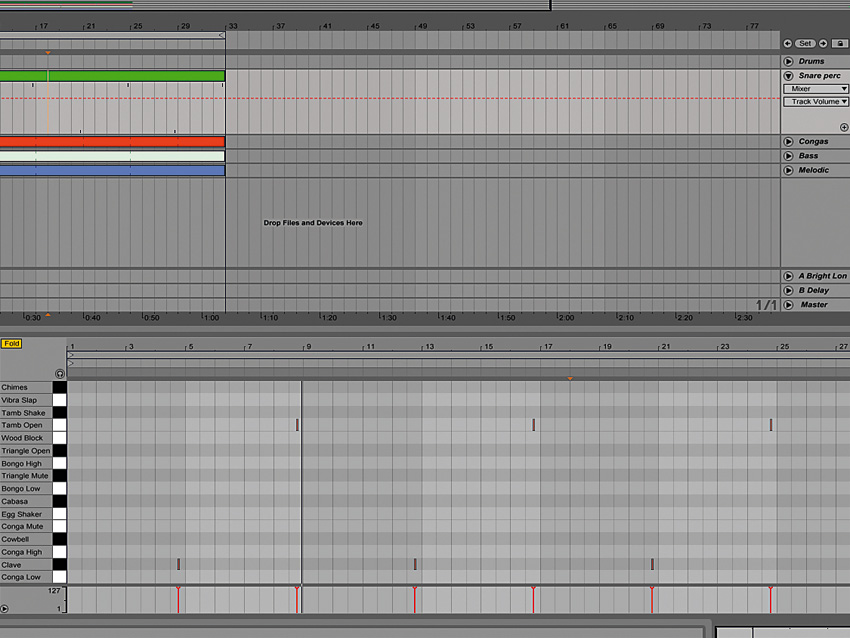
Snare doubling
You’re no doubt familiar with the big, reverb-drenched snare drum hit deployed at the end of every eight or 16 bars of many dubstep tracks, but rather less overt accenting of a similar kind can be applied using high-impact percussion sounds. By ‘high impact’, we’re talking metallic or wooden objects, rather than hand drums.
Stick a tambourine, clave, woodblock or other instrument hit on top of the snare at periodic intervals to mark the end of a phrase, perhaps laying on a touch of reverb or delay to give it some air. For extra depth, alternate between two or more percussion sounds on your chosen snare hit.
There’s nothing stopping you from using a percussion sound as an integral layer of the snare sound itself, too, of course, placing one at the same time as every snare hit, then microscopically adjusting its onset to glue the overall sound’s attack together.
Computer Music magazine is the world’s best selling publication dedicated solely to making great music with your Mac or PC computer. Each issue it brings its lucky readers the best in cutting-edge tutorials, need-to-know, expert software reviews and even all the tools you actually need to make great music today, courtesy of our legendary CM Plugin Suite.
